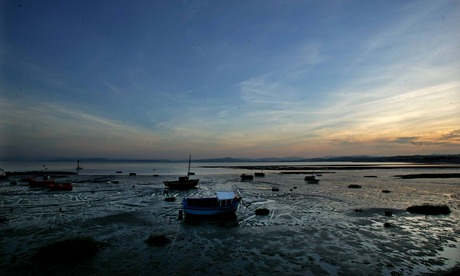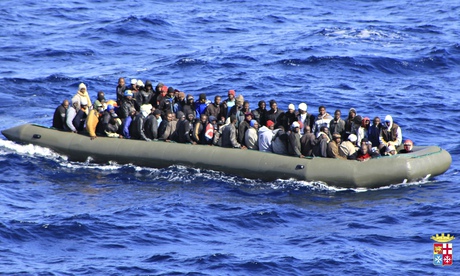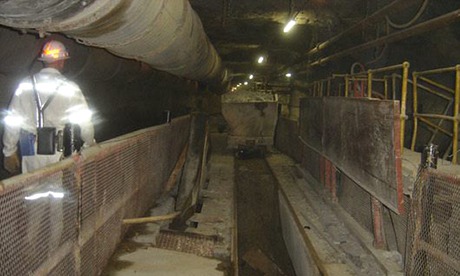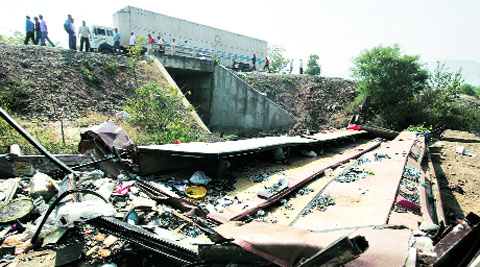
Retired police chief Mick Gradwell led the probe into the 2004 cockling disaster in which 23 Chinese cocklers lost their lives. Operation Lund, as the investigation was called, was an enormously complex prosecution involving more than 1.5million pages of evidence. The trail eventually led to a Chinese gangmaster being found guilty of 21 counts of manslaughter and jailed for 14 years in March 2006. Reporter Michelle Blade spoke to Mick about the events of that fateful night and the ensuing police investigation.
Over an illustrious 30 year career, Mick Gradwell has worked on a series of high profile police investigations, including the Sophie Lancaster murder enquiry, the Haut de la Garenne child abuse investigation and the Morecambe Bay cockle pickers tragedy.
But in 2004, as senior investigating officer for Lancashire Constabulary, Mick Gradwell was thrown into the murky world of Snakehead gangs, and international people trafficking when 23 Chinese cockle pickers drowned in the bay.
Mick said: “I’m a Lancashire lad, used to dealing with crimes in Lancashire, not international organised crime gangs and human trafficking - its not what you expect, not on the landscaped shores of Morecambe bay.
“Until then I had investigated domestic murders, one punch murders, bad on bad murders.
“I was thrown into areas of the shellfish industry I didn’t know about. I didn’t know a cockle from a mussel. I didn’t know about safety issues within the industry, or Snakehead gangs.”
Mick was informed about the disaster the morning after the rescue operation.
As daylight came, eight bodies had been washed ashore - then Mick had another call saying the body count had gone up to 14.
Over time it became known that 23 people had died.
Mick said: “The crime scene was 120 square miles, there were vehicles and bodies and evidence in Morecambe, Liverpool and elsewhere.
“You get used to seeing a lot of horror and gore but seeing that many bodies who looked like they could wake up at some point was shocking.
“The investigation kicked off. We needed to find out where the cockles were going and who was organising the human trafficking.”
Police discovered how money was filtered down to 12 accounts in China from sub accounts in London.
The people who owned the accounts in China made millions.
But Fujian province, where the Chinese cocklers hailed from was one of the poorest places in the world.
Mick said: “Most of the family houses were just shacks. They are some of the poorest people in the world and they were grafting to send money back to their families.
“Most of them were farmers who were quite well qualified but had to get down in the dirt to raise money. The gangmasters tried to abuse people like that.
“One of the family members needed to go abroad to find work. They would have to pay £15-£20,000 to the Snakehead gang to get trafficked, in this case the UK. A large number of Chinese managed to illegally get into Britain, either on the back of a van or a plane.
“They would produce their passport and apply for asylum and told to come back in two weeks whilst their application was processed.
“The vast majority never went back. In 2003 cockles in the EU got the lurgy and became unfit for human consumption. The value of cockles increased greatly.
“Lin Mu Yung started the cockling enterprise which did really well.
“His English girlfriend didn’t speak Mandarin but looked after the illegal immigrants.
“They kitted the cocklers out with equipment and made sure they were looked after and safe. Lin Liang Ren was the cousin of Lin Mu Yung and was a far more nastier business manager and accountant.
“He started to cut things down and provided cheap waterproofs and bought eight year old Toyota Previa vehicles that wouldn’t get stuck in quicksand.
“There was a double tide on February 5.
“On the evening he sent 20 people out and they would two thirds fill a HGV. He would then leave the workers on the beach and return for the morning tide when they would fill up the rest of the HGV.
“When they set off from Liverpool one of the vehicles broke down and 35 people didn’t set off.
“If they had done, there would have been more deaths.
“It was the wrong end of the tide and the worst time you could have gone out cockling.
“Local cocklers were coming in and told the Chinese cocklers not to go out but because of the language differences they didn’t understand.
“A flat pick-up got stuck and was wiped out and it was quite clear he (Lin Liang Ren) had sent them out too late. By 7pm they were already goosed and it was all going wrong.
Lin Liang Ren rang his cousin and asked to be taken out of the area.
“Some of the 35 people out in the bay made their way back on foot to the car park.
“Lin Mu Yung’s girlfriend decided to ring the coastguard and kicked off the rescue.
“By this time it was way too late, 9.15pm. At 9.20pm one of the cocklers called 999 and you can hear them drowning.
“Only one guy, Li Hua, was saved at Priest Skear. He is still in witness protection.
“Lin Liang Ren never admitted anything - we had to prove it by identifying DNA, fingerprints, and using telephony analysis and forensic analysis.
“We had to seize the rent books and documents and prove he was the guy paying the money.
“We had to prove he was the guy who bought the vehicles.
“His fingerprints were on the credit card receipts used to buy equipment.
“The European cocklers said that he was the man in charge.
“There were thousands of telephone calls and the forged fishing permits had links to human trafficking.
“The trial was over six months long because he would never admit to anything.
“It was a huge investigation to send people to China to identify the deceased, and there were language differences and huge forensic accounting issues. It was a very tragic job but we had to offer justice to those who died.
“No matter what we did we were never going to bring a satisfactory conclusion to the job because all the families want is their loved one.
“It isn’t just a bit of paperwork and we do become aware of the personal tragedy and its effects.
“It was such a terrible tragedy, such a needless waste of life.”
Operation Lund won Britain’s top criminal justice award, the Justice Shield, in 2006.
The cockle pickers trial was one of the most complex ever staged in Lancashire.
Survivors who disappeared after the tragedy had to be tracked down, statements proved difficult to obtain because of language barriers and witnesses being fearful of gang reprisals and vast quantities of evidence had to be presented to the court.
New technology was introduced during the trial to provide the jury with location footage and video and audio evidence – with translations where appropriate.
In total, 23 lives were cruelly wasted in Morecambe Bay that night.
Nineteen of those who died were men, four were women, and all but one of them had children.
Two of the cocklers who were not found at the time, were later pronounced dead.
The skull of one of them, Liu Qin, was found eight years later. Their 13-year-old son was left orphaned.
The remains of Dong Xin Wu have never been found. One of the cocklers, Li Hua, made it on to a raised area of rocky sand called Priest Skear and was spotted by a helicopter crew and was picked up by the emergency services.
Li Hua was the only person to be rescued.
Chinese detectives and British police worked for three months after the tragedy to identify the victims.
They used post-mortem photographs and some of the cocklers’ meagre possessions found either on their bodies or on the foreshore. Investigating officers met with families in China and compared DNA samples from relatives.
All of the 23 people who perished were eventually named in May 2004.
When some of the cocklers’ bodies were returned to China, the Chinese government compounded the families’ grief and tried to teach them a callous lesson by getting soldiers to leave the coffins in the street. The families also had to contend with the snakehead gangleaders to whom they owed tens of thousands of pounds.
Thursday 06 February 2014
http://www.thevisitor.co.uk/news/local/slideshow-morecambe-bay-cockling-tragedy-who-were-the-victims-1-6417639
http://www.thevisitor.co.uk/news/morecambe-bay-cockling-tragedy-evil-world-of-snakehead-gangs-1-6417865




/content.jpg)





